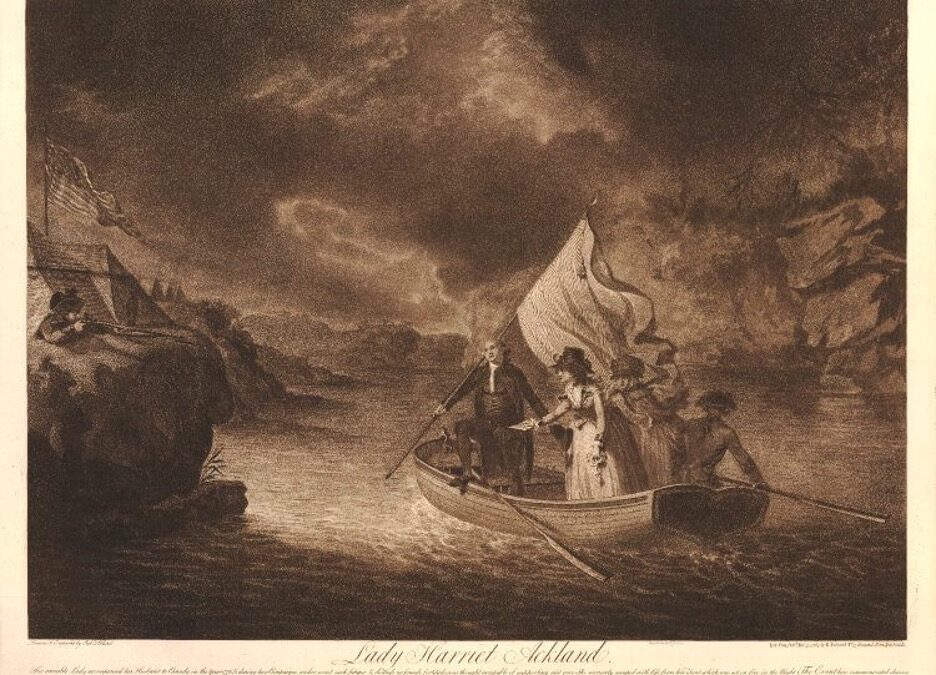
This episode tells the story of Lady Christian Henrietta Caroline “Harriet” Acland, aristocratic wife of Major John Dyke Acland, who commanded the British 20th Regiment of Foot during the Burgoyne campaign of 1777. When Major Acland was wounded and taken prisoner, Lady Harriet risked her own life and freedom to nurse him back to health. She would go on to publish her diary of her time travelling and living with the British Army during the American Revolution.
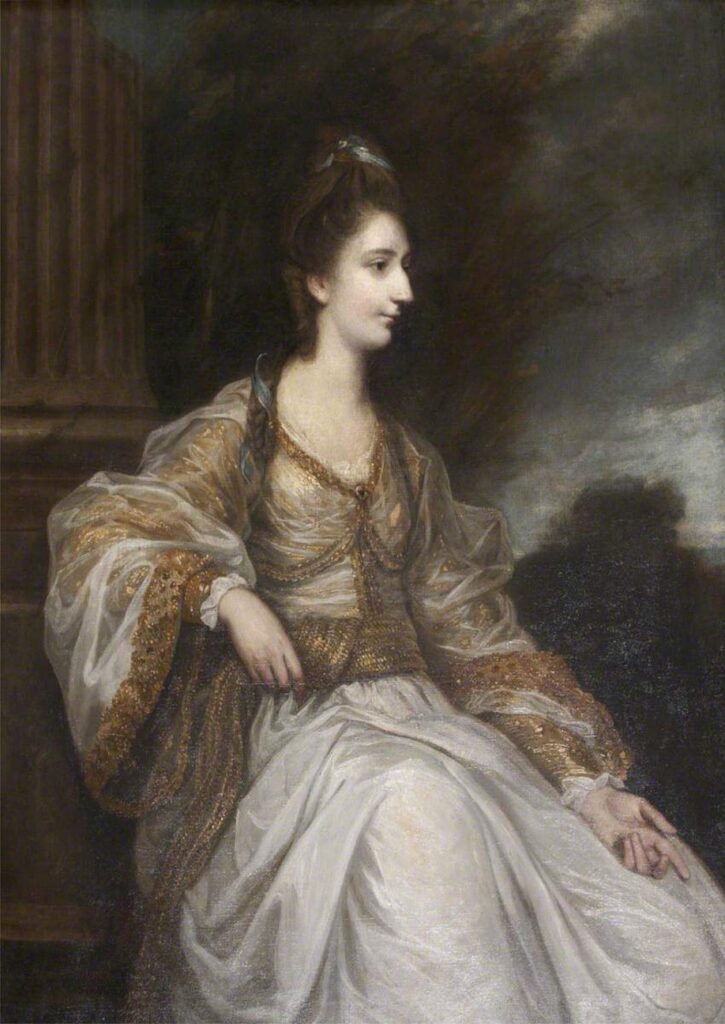
Marker of Focus: Lady Acland, Village of Schuylerville, Saratoga County.
Interviewees: Sean Kelleher, Town of Saratoga Historian and Anne Clothier, Assistant Saratoga County Historian
Further Reading:
Lady Harriet Acland, The Acland Journal: Lady Harriet Acland and the American War, 1993.
Holly A. Mayer, Belonging to the Army: Camp Followers and Community during the American Revolution, 1999.
Richard M. Ketchum, Saratoga: Turning Point of America’s Revolutionary War, 1999.
Teaching Resources:
PBS Learning Media: Women in the American Revolution Interactive Lesson
Museum of the American Revolution: A Woman’s War
National Park Service: The Battles of Saratoga: Student Reading Activity
Follow Along
Devin: Welcome to A New York Minute in History. I’m Devin Lander, the New York State historian.
Lauren: And I’m Lauren Roberts, the historian for Saratoga County. Today we’re focusing on a marker located along Route 4 in the town of Saratoga, which is in Saratoga County. It sits at the entrance to a public boat launch and park that’s along the Hudson River, and the text reads, Lady Acland. On October 9 1777, Traveled down Hudson River to Stillwater to nurse her wounded husband, British Major Acland, held prisoner by American forces. William G Pomeroy Foundation 2021.
I’m going to go out on a limb and guess that most of our listeners are not familiar with the name Lady Acland or her more formal name, Lady Christian Henrietta Caroline Fox-Strangways, Acland, who went by the name of Harriet. Harriet was born on January 3, 1749, in England. Her father was an Earl, so she lived a very privileged life, and she married John Dyke Acland. During the American Revolution, major Acland was sent to the colonies to fight, and in 1777 Lady Acland accompanied him to Canada.
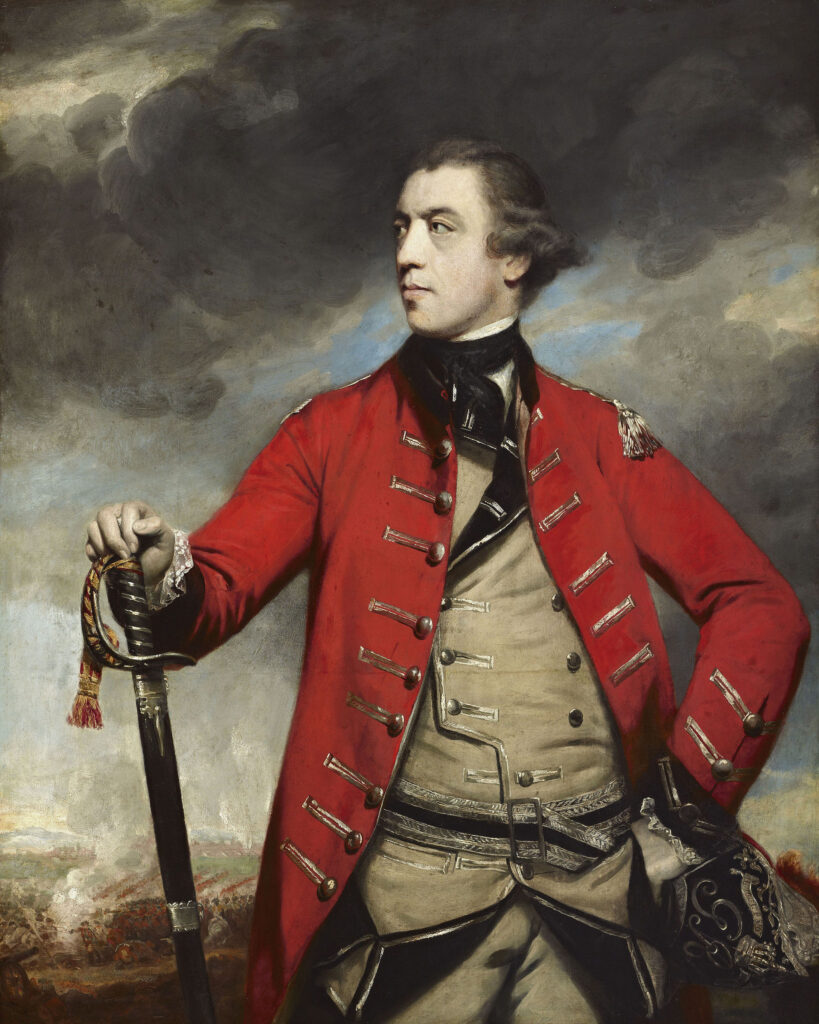
So for those of us who might not remember fourth grade American Revolution history, just a brief overview of that campaign led by General John Burgoyne. The British army of between 9000, 10000 were coming down from Canada, and their main objective was to fight their way through and reach Albany. And while Burgoyne was successful early on in his campaign – he took Fort Ticonderoga without a fight – and continued to move his army south until he made it to Saratoga. So the first battle of Saratoga happened on September 19, 1777, it was essentially a stalemate. The Americans were successful in stopping the British advance towards Albany, but at the end of the day, the British Army held the field of battle, so they calculate that as a victory. And on October 7, the second Battle of Saratoga occurred. By that point, the British were outnumbered, low on supplies, and they were losing men. So on October 7, the American army was victorious and forced the British into a retreat. General Benedict Arnold was instrumental in that battle, he rallied his men, and he was valiant. He was also shot just above the ankle in the left leg, which is why we have the famous boot monument. But it does force the British into a retreat. They begin to retreat north, about eight or nine miles north of Saratoga Battlefield, and they eventually are surrounded by the American forces. There’s no way for them to head back north, and so they negotiate terms of convention, and on October 17, General John Burgoyne surrenders to General Gates at Saratoga, or what we now call Schuylerville. And it’s the first time in world history that a British Field Army surrenders, and that army then becomes known as the convention army. They’re essentially prisoners of war for several years after that, but it’s known as the turning point of the American Revolution. It helps to convince France to finally become our ally and to send troops and what we desperately needed, a navy.
In June of 1777, Major Acland served in the 20th Regiment of Foot in Burgoyne’s army, and he was part of the expedition from Canada that General Burgoyne was leading to come down and conquer Albany to learn more about Lady Acland and her story. We spoke with town of Saratoga historian Sean Kelleher.
Sean Kelleher: So I’m Sean Kelleher. I’m the historian for the town of Saratoga, and I’ve been a historian in the town for 20 years now. I’ve kind of come to becoming a historian through an interesting way. I’ve always enjoyed putting on historical events. I grew up during the American bicentennial in the Boston area. After college, became a TV producer doing primarily educational type programs for a PBS station. And the skills that I learned as a TV producer worked very, very well as a historian too, because it’s basically: go out, find out information and share it with others. It’s the same basic skill sets.
So Lady Acland is one of those interesting stories from the Saratoga campaign of 1777. She is this aristocratic lady, and in 1777 she marries this John Dyke Acland. So she accompanies him on campaign with a valet, a ladies maid and a dog, and she creates this narrative of the American landscape that later gets published, and there’s paintings done, and it just shows people of Europe what America looks like.
They started up in Canada, and as they were leaving Canada, her husband got quite ill, so she spent some time in June nursing him back to health, and then he joins the British Army for the attack on Fort Ticonderoga. And during the subsequential Battle of Harperton, he receives a dangerous wound, and she rushes to him to nurse him back to care. And in that process, they have a second tragedy, that their tent gets caught on fire. She goes out one side, and he goes out the other, and he can’t see her, so he goes back into the tent to save her, and she’s not there, but he gets burnt in the process. So he’s having a tough time in 1777. But again, he gets nursed back into health. So when we get to the second battle of Saratoga in October 1777, he’s there on the front lines, leading his regiment the 20th of Foot. And he gets wounded again, so he gets brought to the British hospital. She’s with the British Army. The British Army retreats north to the village of Saratoga. What we know as Schuylerville today, but they abandoned their hospital, so he becomes a prisoner of the Americans.

On October 9, she goes with another woman, the Baroness von Riedesel, to General Burgoyne, and they ask for permission for Lady Acland to go down and to nurse her husband. So it’s during a driving rainstorm Burgoyne writes a note to Gates asking for his assistance in getting her to her husband, and she goes down the Hudson River in an open boat. It’s 11 o’clock at night during a driving rainstorm in October. It’s her, her maid, her servant, and a minister. And of course, the lap dog. You can’t leave the lap dog behind. They make it down to what we would call the Colville area, and they get stopped by an American sentry. And this is where the stories start to change a little bit. But the American telling of the story is, they halted her. They waited so that Major Dearborn, he was in charge of the light infantry from New Hampshire. He comes up. He obtains what’s going on. He receives the note from Burgoyne, and he decides that it’s no longer safe for them to be in in the Hudson River, brings them to shore, and then moves her to this cabin that he had set up for his bedding, and he gave gives up his bed, gives it to her, they start a fire, they give her a cup of tea, and in the process, they realize her delicate state, she’s pregnant. So the Americans, according to Dearborn’s telling of the story, took care of her. The next morning, at sunrise, some aides for Gates come up and they bring her down to her husband, who is at the American hospital at this point around the Neilson House, a site that many people know within the battlefield. Ultimately, they end up going as a couple down to Schuyler’s house in Albany, where they’re better able to nurse him, and he regains strength. And they’re prisoners until 1778.
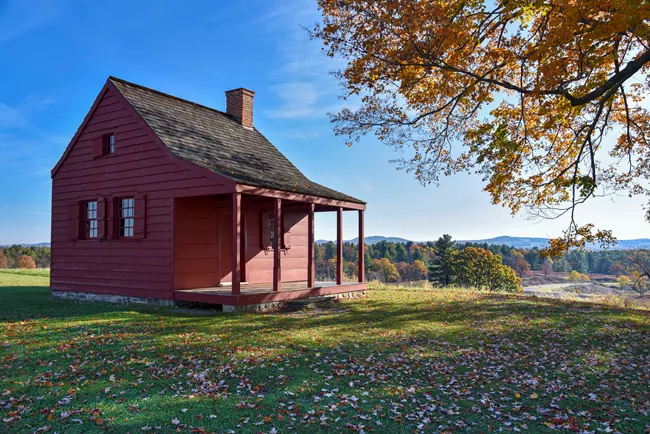
Lauren: We also know about Lady Acland’s story through the writings of Lady Frederica Riedesel, who is also known as the Baroness. She was the wife of the commander of German troops at Saratoga, and she describes Lady Acland’s story as well, in more detail than Lady Acland’s own diary. So she mentions that she actually convinces Lady Harriet Acland to go to Burgoyne and ask for permission to be able to cross lines and go to her husband. And of course, the Baroness is writing her memoirs after the end of the campaign, and we know that Burgoyne had to surrender, and it’s not successful. But she mentions that Burgoyne is busy drinking champagne and partying with the wife of one of his officers, rather than being concerned about his soldiers that were out in the cold and the rain, because the night that Lady Acland went down the river, there was a driving rainstorm, and it was cold, and all of the troops were out in this weather, suffering through this while Burgoyne was in A nice, warm house with champagne and a lady friend. So the Baroness is very critical of this, but she also describes the story of Acland. So we have several sources that talk about what was happening on that night.
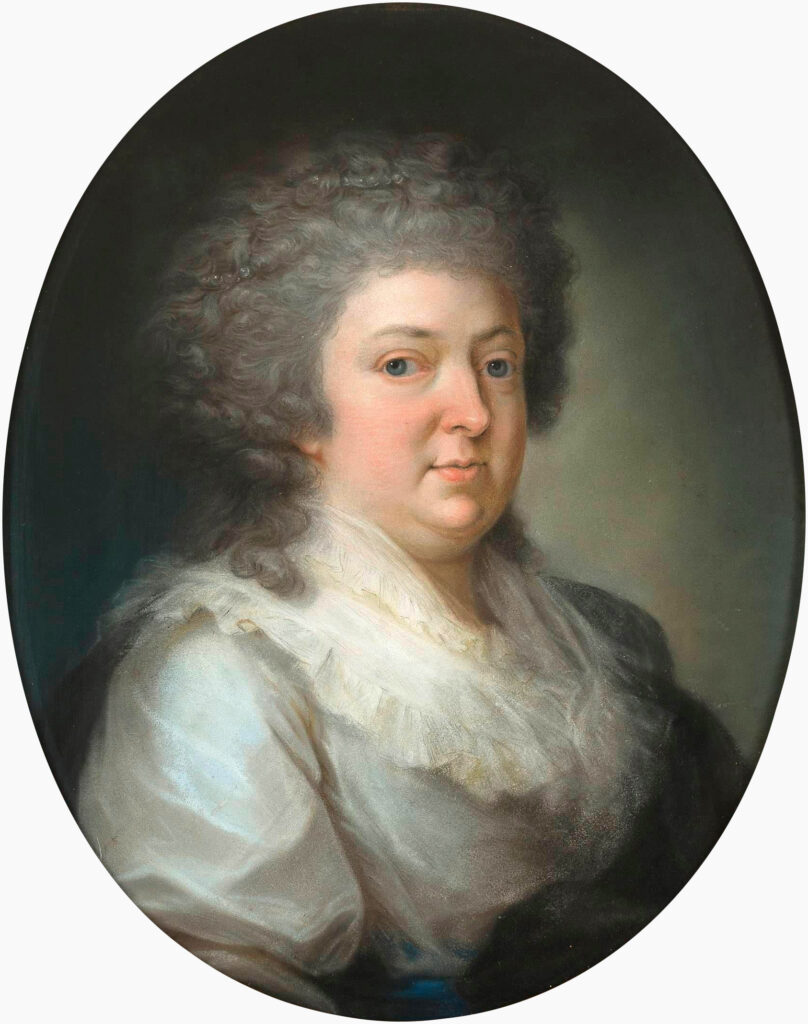
Devin: So you’ve outlined a pretty exciting and violent and arduous campaign from Canada down through the Champlain Valley and into what is now Saratoga County. So why would a lady born into nobility and extreme privilege in England; What was she doing following this army?
Lauren: It’s a good question, and I think there’s probably several different reasons, but women were constantly present with both armies. But definitely there were more with the British Army, and there’s different roles that women played in following the army. So in Lady Acland’s case, we know that she was privileged, she was wealthy. So she would have been able to choose if she wanted to stay home and live in luxury in England with servants and probably a beautiful estate, or she could choose to follow her husband, probably out of a sense of duty to him, or love for him, and maybe adventure. This could have been an opportunity for her to see another part of the world that she might not have gotten in any other case, and she wasn’t roughing it. I mean, she had maids with her. She had supplies, all of the things that she needed. But that doesn’t mean that it would have been the same type of life that she was accustomed to in England.
Devin: And she was obviously highly educated, because she kept a transcript of her adventures and became one of the chroniclers of Burgoyne’s campaign as a person who was actually experiencing it, so a very important primary source document that she created.
Lauren: In order to learn more about women camp followers, particularly with the British army. We spoke with Anne Clothier, Assistant to the Saratoga County Historian, and a living historian who focuses on programming about women in the American Revolution.
Anne Clothier: So my name is Anne Clothier, and I’ve been interested in the topic of the 18th century and the American Revolution since I was a little kid, and I actually got involved in living history when I was about 13, and I joined a Girl Scout Troop at the Saratoga National Historical Park. This group did volunteering there and helping out with special events. And then I started volunteering there independently, and I also joined a reenacting regiment around that time as well, and I really never could step away from history. And I went and I got my bachelor’s in history, and then my master’s in museum studies. And I now am working at the Saratoga County Historian’s Office as assistant to the historian, but I also continue to do living history programs and presentations as well, with a special focus, certainly on the American Revolution, but also women in the American Revolution and their roles as nurses, but also the experiences of loyalists and British women who were following the Burgoyne campaign.
So women’s reasons for traveling with the Army certainly varied, and a lot of it depended on their own social background, their social class. So for someone like Lady Acland, a lot of it seemed to really have to do with her personal feelings of responsibility toward her husband. In her writings, and those who were writing about her, she seemed to really have a lot of really strong loyalty to her husband and also concern about his well being, and so that was a major reason for her certainly. It did seem like initially the plan was that she was going to stay in Garrison at a fort while her husband continued southward on the campaign, but after he was initially injured, she rushed to his side up by the shores of Lake Champlain. A lot of women did stay in Garrison, but there were certainly also many women again, that would continue on with the campaign. Sometimes the commanders were bemoaning this additional responsibility and drain on resources. However, it’s also worth noting that these women were fulfilling very important roles on the campaign and doing things that really needed to happen to keep that army going.
Lauren: So those types of roles, though, that wouldn’t have been something that Lady Harriet Acland did?
Anne: Certainly not. So she would be someone who, again, her primary responsibility was her husband, and whether that was his physical and emotional welfare, having someone to converse with and discuss. Again, her focus was him, but various other women who were following with the army would have roles that were actually assigned by the regiments that they were associated with.
[There were]certainly more women in the British camp generally, for the most part, they had come over because they were following their husbands out of a sense of conjugal duty and responsibility, but also reality, because a woman who might have been left behind across the ocean in England, she would have had to rely on any family she might have had there, be it her father or brothers in law or things like that, if she didn’t have those resources or just that wasn’t a viable option. Following her husband was the way to maintain herself, maintain her children and keep the family together. So it was something that many women ended up doing. The regiments tried to keep a limit, a cap on that number, but it was still something that many women chose to do.
So these women who were your average followers, who were traveling on campaign with their husbands, who may have been private soldiers or corporals or sergeants, things like that, they would have been assigned to roles such as nurses, and we think of nurses being necessary in the immediate aftermath of a battle. However, a lot of soldiers also suffered with sickness, so these nurses were needed to care for soldiers who were dealing with typical campaign illnesses. So it was a fairly constant need. Certainly that need drastically increased around the time of battles, but women were needed in those hospitals. Their roles as nurses were not necessarily what we think of as your typical registered nurse role today, but they were maintaining the soldiers, making sure that they had food, that they were hydrated, and also maintaining cleanliness in the hospitals as well. And it was more of the surgeons, hospital stewards, surgeons maids, that were dealing with the actual medical procedures that we think of, especially in the aftermath of the battles. But again, those women were keeping those hospitals running cleanly and smoothly.
But in addition to nursing, there were also roles to maintain the uniforms of the soldiers, to be seamstresses, to sew things that were needed by the soldiers. And also repair. These are soldiers on campaign, so certainly, things are getting ripped. So repair was a part of that. But also, again, back to that idea of cleanliness. We spoke of it in the hospitals. But cleanliness in the form of laundry, it was very important for the soldiers to have clean clothing, especially their shirts, and so women were employed washing the shirts to, again, make sure that there was sanitation to try and keep down the issues of body lice and things like that, because there was awareness that sanitation could improve the general overall health of the soldiers, and that could only make an army stronger.
Lauren: I think it’s easy to see that they were absolutely necessary for the army to function. For both armies, you had to have them in the British army, and much to Washington’s chagrin, you had to have them in the American army because they performed the roles that soldiers did not want to or could not. So whether they took up resources or they distracted, they certainly were essential, and they were more than just prostitutes. And I think a lot of people, when you hear the term “camp follower,” they immediately think that they were all just prostitutes, and that’s that really wasn’t the case. And the more we uncover sources, the more we learn about the different roles that they played, and about their experiences too.
Devin: So that brings me to a question, what happened to Lady Acland and the other camp followers of Burgoyne’s army after the surrender?
Lauren: So all of the women that were following Burgoyne’s army also became prisoners of war. They were part of the convention army. They certainly didn’t have the same experience. They all didn’t have the same experience after Lady Acland made it through the American lines and was able to nurse her husband, the wives of the officers, there were others too. Lady Riedesel also. They were hosted by Phillip Schuyler at his mansion in Albany after the surrender, and they stayed there for a while, and then they proceeded to Boston, eventually, where the rest of the army had to walk.
So your average camp follower had to walk. So October 17th was surrender day, if we think about what weather is like in upstate New York in the middle and end of October, they walked from Saratoga to Boston in cold weather, their clothing became rags. They were not prepared for the elements. Many of them didn’t have shoes. Many of them were carrying young children on their backs along with whatever their worldly possessions were, and they had to make this arduous trip. So the terms of surrender that gates agreed to were that, you know, once burgoyne’s army surrendered, they could then march to Boston and be put on ships and go back to England. But Congress did not agree with this. They thought there’s no way they’re actually not going to come back and fight, or they’re not just going to go to a different port or reinforce some other troops so that they could then come and fight in North America. So they didn’t ratify it, so they weren’t allowed to leave. They weren’t allowed to go back to England, so they had to stay as prisoners of war. But we know that the American army could barely feed themselves, let alone feed another several thousand person army. So they were undersupplied. They didn’t have adequate housing. And they actually remained prisoners of war for years now. Now Lady Acland, they were allowed to leave and go back to England in 1778, and of course, they weren’t under the same strain that regular followers were. They still had their maids. They had a carriage they could ride in. They would rent houses so they had adequate shelter.
Sean: In the process of going back to England, they have their son. So he’s born on the boat. His son, unfortunately, doesn’t live that long. He lives about until the age of seven, and roughly at the same time, about seven years down the road, John Acland also dies, supposedly from a duel. It may have been complications from all of his wounds, but he ends up dying. Lady Acland ends up being a widow for many years, she’s probably… What a lot of people might be aware of are noticeable. Her family’s quite prominent, and it’s her grandson that ends up building the family home in England, known as Highclere Castle. That’s the grand house that was in the star of the Downton Abbey series on PBS. So there’s even a tie to Downton Abby here. So for obvious reasons, you can see it’s a it’s a compelling story, and it made sense to make this into a Pomeroy marker.
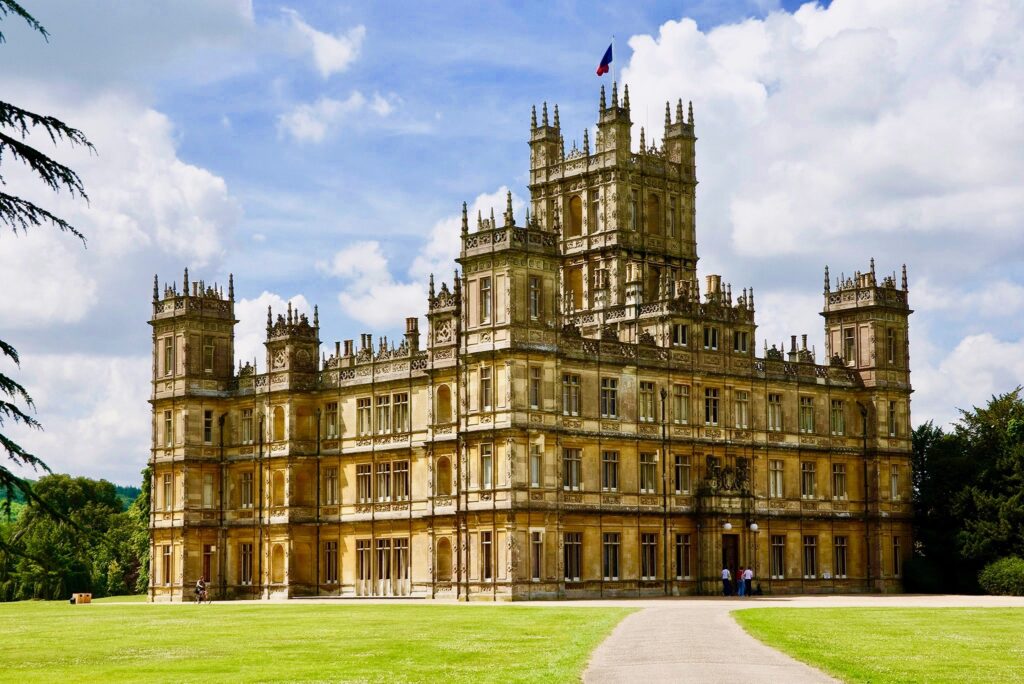
Lauren: As part of the upcoming 250th commemoration. It’s important that we keep talking about these stories that people aren’t familiar with, notably, the stories about women in the war. One of the things that we’re trying to do at Saratoga 250 is to bring some of these stories about the women that were in the Saratoga campaign to light. And the last few years, we have held a Women in War symposium. The first women in war symposium was the idea of David Bullard, who owned the Marshall House, which was the house that many of the officers’ wives took refuge in during the siege of Saratoga. Notably, the Baroness was in the cellar with her three young daughters under the age of five, and the house was being cannonaded for about a week, and she tells the stories of what that was like to be there with her children and experiencing the wounded soldiers who were there with her, the other officers’ wives, some of which lost their husbands, and there was a lot of sickness. There were infected wounds, the smell that they had to endure in the cellar. So we know a lot about the officers’ wives because of these writings. And so the Women in War symposium has been a way to bring scholars together who are doing this research and give them a place to present their work. And it’s not just about women on the Saratoga campaign, it’s women throughout the American Revolution. This past May we had Dr Holly Mayer come and talk about Margaret Corbin, who was the first female to earn a pension from the American government. She famously took over the cannon when her husband was killed and she was wounded and became part of the Invalid’s Corp and was paid for her service to the country. And there were other scholars that spoke about women of all economic backgrounds and the different roles that they played. And I think it’s important to keep talking about the roles that women played. It gives us a better understanding of the larger concept of what happens in warfare, understanding that broader impact of not only the combatants, but also the people living around the area where the battles are happening and those that are playing supportive roles; that all feeds into the larger picture and understanding of what we know about the American Revolution and how it affected the lives of everyone, not just those that were combatants.
Sean: It’s not only, obviously we’re talking about Lady Acland, but she’s also there with her maid, so there’s another woman. Their stories are there. They just need to kind of be pulled out a little bit more. And that’s something that we’re always actively looking for, especially today, because we’re still telling the stories of Burgoyne and Gates and so on, and we’re still telling the stories of the common soldier, but we’re also trying to tell the stories of the common women that were there.
